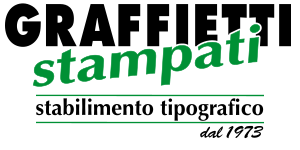PDF FILES FOR OFFSET PRINTING PROCESS

PDF FILES FOR OFFSET PRINTING PROCESS
Preparing files for printing is not a job to be underestimated and, achieving a good result, means not neglecting any detail.
The first thing to do, when you need to prepare a file for printing, is to make it universal, to release it in a standard format and no longer an owner.
The proprietary formats are those readable only by the same application program with which they were created (example: QuarkXPress, Adobe InDesign, Illustrator, Photoshop, etc.).
In the event that the printer was not provided with such software, or did not have available the version used in processing the file, it could be pain …
The standard format of excellence for jobs for industrial printing is the famous PDF (Portable Document Format) originally developed by Adobe. Peculiarities of this graphic format is that it can contain, in a single file, all the information and data necessary for quality printing, such as, for example, the layout of any document, the fonts used, the high resolution of the images, information about format and trimming, trapping, color profiles, transparencies, vector graphics, multimedia elements (audio and video) and more. It is able to describe documents of any weight containing any combination of these elements, ensuring compact file sizes, fast transmissions, sharing with any operating system, printing on any device and immediate visualizations. Born in 1991, the PDF format has become, over time, the technological standard (ISO 32000-1:2008) for the representation, distribution and exchange of digital documents all over the world. It can be created in two ways: through a PostScript interpreter such as Acrobat Distiller or by using the export function found in many graphic software packages, such as Adobe Photoshop, Illustrator, InDesign, QuarkXpress, CorelDraw and others. PDF is also the format in which documents are transmitted to the typography. For this reason it is necessary to create it with great care, inserting all the useful information for the purpose and eliminating those not necessary for processing such as, for example, multimedia, scripts or other.
Precisely to meet the needs of the traditional publishing world, ad-hoc versions of the PDF format have been created that use only subsets of the functions of the entire graphic format: exclusive functions, suitable and reliable for industrial printing. This is the PDF/X version, where the letter X stands for eXchange (between designers and printers). The PDF/X standards have been developed by the ISO/TC130 technical committee (Graphic technology) and identified by the initials ISO 15930. This particular format exists in different versions, but the most used in offset prepress are PDF/X-1a and more current PDF/X-4.
[NOTE: This is an automatic translation]

